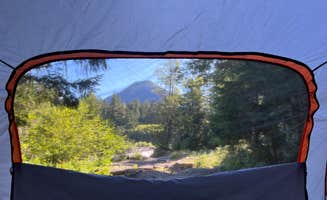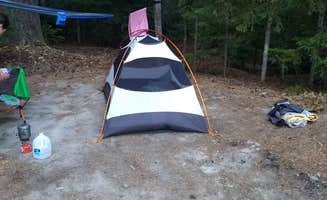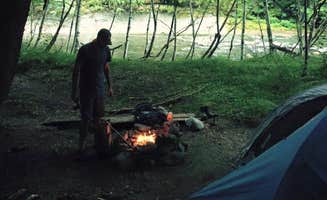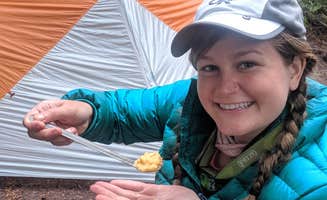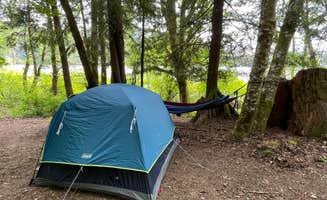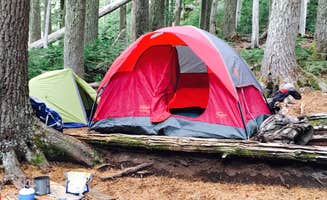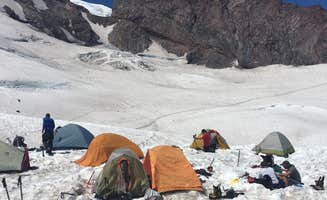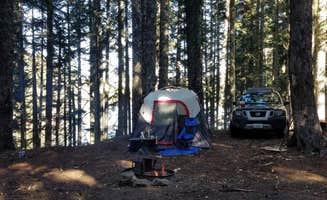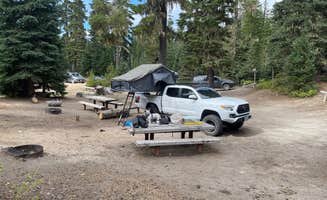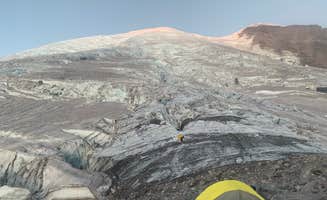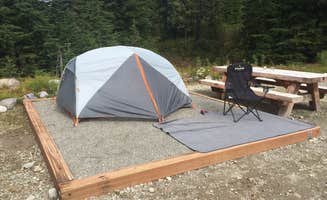Tent campsites near Glenoma, Washington range from challenging mountain-access sites to riverside retreats with elevation variations from 1,200 to 4,000 feet. Most primitive camping areas remain accessible from late April through early October, with winter snowfall limiting road access during other months. Temperatures can drop to 40°F even during summer nights, especially at higher elevations.
What to do
**Mountain hiking: ** From Paradise Pines, campers have quick access to Mount Rainier National Park trails. One visitor noted it was "super easy getting into the park" with the "quiet nature of the site" making it an excellent base for exploration.
River access: Multiple campsites offer paths to the Nisqually River and other waterways. At NF-52 Dispersed Camping, one camper found "awesome walk in spots" with "easy access down to the river, and a fire pit."
Fishing opportunities: Tower Rock U-Fish RV Park offers an on-site trout pond where visitors can fish without a license. A reviewer mentioned "you can pay a small fee to fish, don't even need your own gear or a license," making it accessible even for beginners.
Wildlife viewing: Early morning deer sightings are common at several camping areas. At Paradise Pines, campers mentioned that "the wildlife (deer) that wandered through every morning was delightful."
What campers like
Privacy and seclusion: Several camping areas offer secluded sites away from crowds. At Green River Horse Camp, one visitor found "plenty of maintained camp spots" with "flat ground for tents, campfire grill, picnic bench, and an outhouse."
Mount Rainier views: On clear days, several campgrounds offer mountain views. A camper at NF-52 Dispersed Camping mentioned "the view of rainier is amazing" from many of the dispersed sites.
Night sky visibility: The limited light pollution offers excellent stargazing opportunities. One visitor at Mount St. Helens Dispersed Camping noted that while they "could hear gunfire above my site" during daylight hours, it was "peaceful" as evening approached.
River proximity: Many tent sites are located within walking distance of rivers or creeks. A camper mentioned "a cool entrance to the river" at Paradise Pines that was "so peaceful and private."
What you should know
Road conditions: Access to several camping areas requires driving on unpaved forest service roads. At Mowich Lake Campground, a visitor warned about "the gravel road to get up there, it's like 15 miles long and it's rough."
Facilities variation: Toilets and facilities vary widely between locations. Some dispersed areas now have temporary toilets during peak season, while others have none. At NF-52, a visitor noted that "Forest Service has installed 6 temporary toilets for the third year in a row to assist with human waste issues."
Temperature fluctuations: Even in summer, nights can get cold, especially at higher elevations. One Mowich Lake camper warned that "even in July there is snow and temperatures reached as low as 40F."
Insect activity: Bug populations can be significant, particularly near water. A camper at NF-52 reported finding "ants ALL OVER! Maybe the big trash pile but they seemed bigger (Carpenter?). Not only could I not enjoy the space outside my tent and just chill but they also were all over multiple path entrances."
Tips for camping with families
Extra space consideration: Families need more room to spread out. At Paradise Pines, a visitor shared that "our family loves staying in private camp sites. With little kids you really can't beat it!" noting that "having 2 tent pads was super nice for our big group."
Wildlife viewing opportunities: Schedule early morning time for potential wildlife sightings. Multiple campers reported deer sightings at several campgrounds during morning hours.
Fire restrictions awareness: Check current fire restrictions before arriving, as they change seasonally. A camper at Green River Horse Camp mentioned that sites had "campfire grill" areas, but restrictions often apply during dry summer months.
Walk-in site preparation: For families considering walk-in sites, pack accordingly with lightweight gear. At Tower Rock, one visitor "stayed in our rooftop tent on one of the back wooded sites and loved it."
Tips from RVers
Small RV access: Most dispersed areas can only accommodate smaller RVs and vans. At Tower Rock U-Fish RV Park, one RVer reported "we stayed here in our RV in August of 2019 and really enjoyed the peace and quiet. The sites have full hook ups."
Connectivity limitations: Expect limited or no cell service at most camping areas. A Tower Rock camper warned "it's quite remote so not the place to go if you want to stay connected to the outside world. I don't even think we had cell coverage."
Road clearance: Some forest roads require vehicles with decent clearance. At Mount St. Helens Dispersed Camping, a visitor advised that "the road coming in the last 10 miles is rough in many spots. It's hard to see the bumps and dips in the road in the early evening."
Parking constraints: RV camping spots are limited near Glenoma. One reviewer noted that at Mount St. Helens, "there are many spots to choose from for cars, trucks, and vans. It doesn't seem like it's designed for RV's and trailers."


